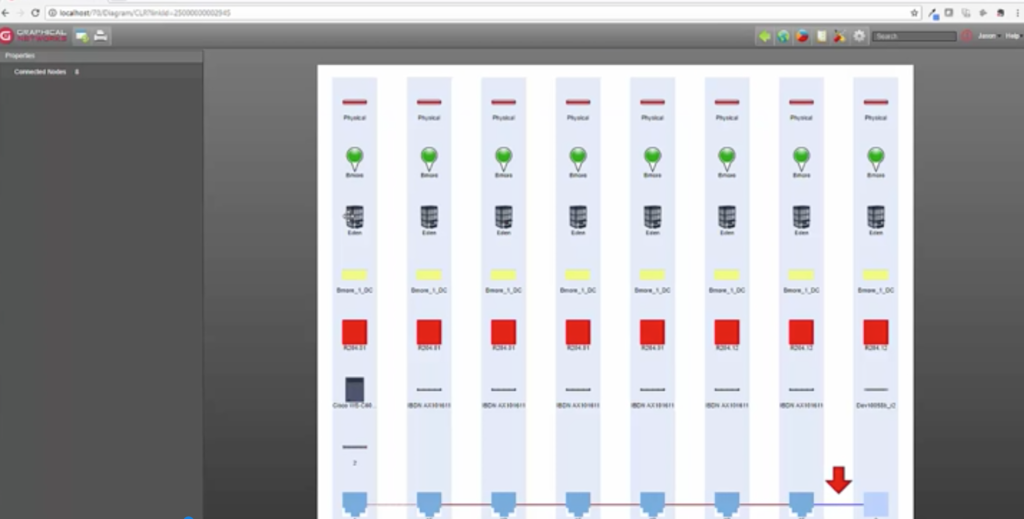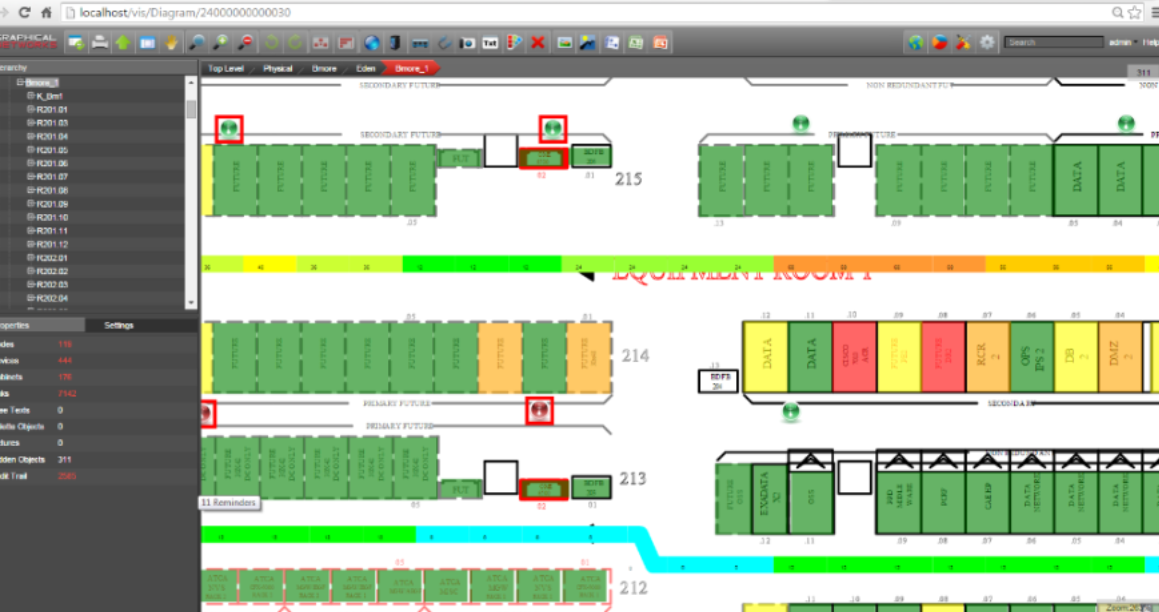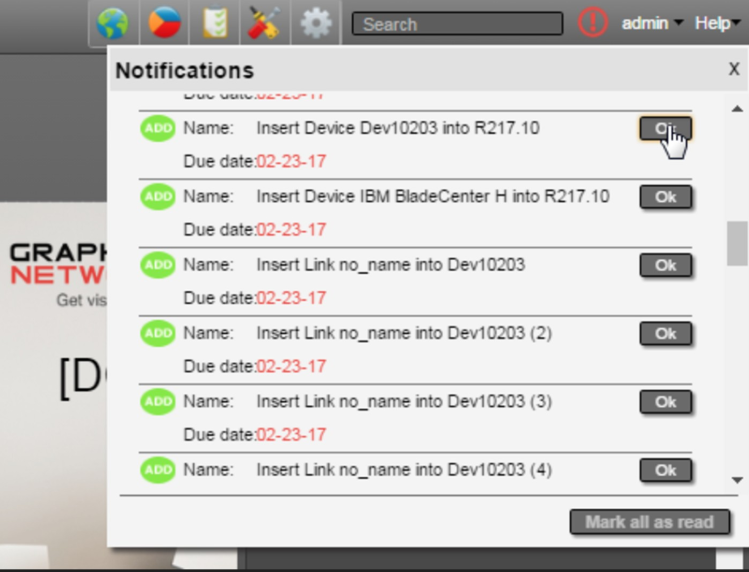
I’ve often talked about how you can use netTerrain DCIM software to manage your data center’s capacity — such as being able to manage rack capacity and control space, power, and weight availability. With netTerrain’s Environmental Monitoring Module, which is included with netTerrain DCIM, you can also track, and view, power in real-time to increase rack density and find underutilized servers to further improve your asset management.
 Visualization of power capacity in netTerrain DCIM
Visualization of power capacity in netTerrain DCIM
In this article, I’d like to focus on another aspect of documenting your infrastructure using our software netTerrain: managing your cables…
From fiber (and fiber strands) to copper cables, cable trays, power cables, and showing fiber cables from both the inside and outside plant, managing your cabling infrastructure is important. Why is that? A poor cable management strategy hurts your efficiencies and bottom line.
Poor cable management hurts because the truth is that having a solid grasp on your cables and circuits is essential: you understand how your assets are tied together and how they are related and connected to each other — and a proper cable and circuit management process in place is a vital component to a successful implementation of DCIM software.
Here’s an example…
1. You decommission a cable (whether fiber or copper) connection across multiple hops.
2. In the rush to get that switch disconnected from one end, it is very common to “forget” about the rest of the cable trace (the cross connections across patch panels, and so on).
3. Forgetting is easy to do, and without a cable management strategy in place, you end up hurting your efficiency and bottom line.
When you forget to fully decommission a cable, you end up with a new problem: zombie cables. In this blog, we’ve often discussed the problem of zombie servers ( underutilized servers)
Zombie cables, or cables that are not connected to anything, lead to a myriad of real, and expensive, problems:
- used ports that are not providing any services
- cables going through trays that are only occupying space and not performing any other function
- fiber strands that supposedly carry traffic but don’t
- acertain percentage of your equipment that is supposedly supporting infrastructure, but isn’t
How do you get started with a cable and circuit management strategy?
If you don’t currently have spreadsheets with reliable data, honestly, you will need to manually go to each port and trace where it ends. Many organizations have to do a complete site survey (this is something we can do for you via our professional services and our reseller-partners can also assist in this survey) to get the data established. After the data is input into netTerrain, you can then utilize and mandate a work order task to make any changes to the cabling going forward. This process is how you can maintain up to date diagrams.
 Example of a circuit layout record in netTerrain
Example of a circuit layout record in netTerrain
When you use netTerrain for cable management, you have access to the following capabilities:
Port to port connections
- color code cables based on custom criteria
- cables can be viewed at any level, including: port, card, device backplane, rack and floor plan
- track fibers from the switch to the patch panel – and any hop in between
- create circuit layout records for end-to-end tracing of each fiber strand or copper cable
Fiber connections
Fiber strands can be associated to fiber trunks and conduits; fiber cables can be routed in a precise fashion going through street maps, for example.
Cable Tray Management
- manage and track both underfloor and overhead trays
- cables of any type can be routed through any number of tray sections
- users can automatically track tray occupancy rates and can create their own custom fill equations
- trays can be dynamically color coded based on current fill thresholds
 Example of a tray view of a data center in netTerrain
Example of a tray view of a data center in netTerrain
Can you automate documenting cables?Yes and no: you can use netTerrain’s SNMP discovery to document Layer 2 connections, but SNMP cannot discover patch panels, unless they are the smart, or intelligent, types of patch panels. With smart patch panels, you can utilize netTerrain’s visualization and connectors to visualize and create a network topology map so that you can easily trace the cable routes throughout your network.
With netTerrain, you can find information quickly and troubleshoot faster by tracking ports — ports used, and ports that are free. With netTerrain’s work order task feature, you can properly commission and decommission your cables — and run reports to view port occupancy and, finally, to get a handle on your cabling infrastructure.
 Example of netTerrain’s Work Order Feature
Example of netTerrain’s Work Order Feature
Bottom line? Connectivity, clearly, is a major factor in data center efficiency and your DCIM software strategy is greatly enhanced with the right software for proactive cable and circuit management. So, as you take steps to combat zombie servers, don’t forget about the zombie cables that may be lurking around your data center.
